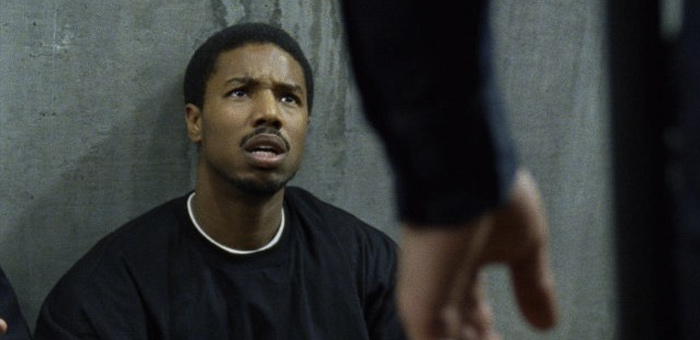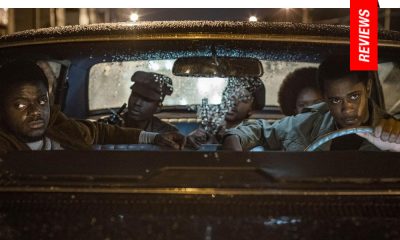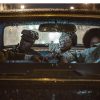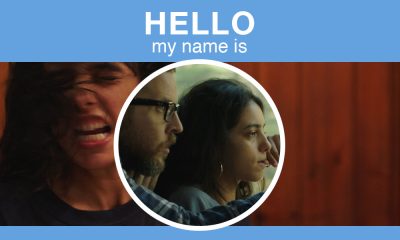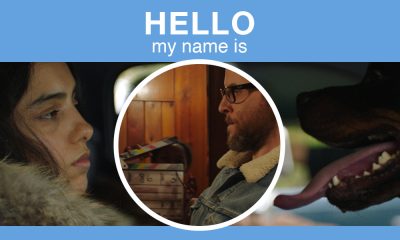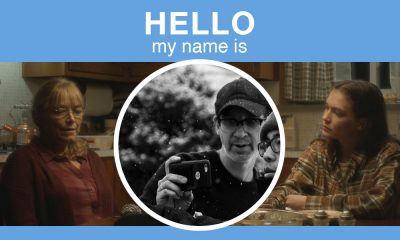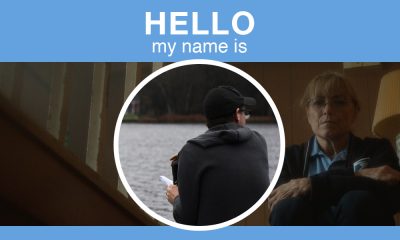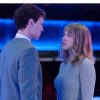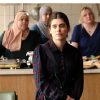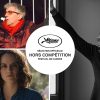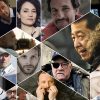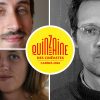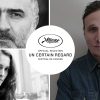IONCINEPHILE of the Month
IONCINEPHILE of the Month: Ryan Coogler (Fruitvale Station)
IONCINEMA.com’s IONCINEPHILE of the Month feature focuses on an emerging filmmaker from the world of cinema. This filmmaker’s feature debut won the Grand Jury Prize and the Audience Award at the 2013 Sundance Film Festival, it would be picked up approximately 48 hours after it’s premiere by the Weinsteins and under its new title, the filmmaker was bestowed a special (a Halley’s Comet, once in a blue moon type honor) “Best First Film” jury prize by the Un Certain Regard jurors. Fruitvale Station receives its NYC and L.A release this Friday, July 12th and will expand nationally in the weeks to come. Here is our profile on Ryan Coogler and stay tuned….he’ll soon be sharing his Top Ten Films List with us.
Background:
Eric Lavallee: What films were important to you during your childhood?
Ryan Coogler: My father took me to see Boyz in the Hood and Malcolm X on their respective opening days at Grand Lake Theater in Oakland. I was 5 and 6 years of age at the time. I also have fond memories of watching all the Rocky films with him. I was excessive, to the point that I knew all of them by heart, especially Rocky II. My mom’s favorite film is Goodfellas, and I would sneak around and watch that too, and every New Year’s Eve, I’d watch the Twilight Zone marathons with my parents off the Sci Fi Channel. I also watched the normal kid movies of the early 90’s…I was a big fan of all of the Disney films that were big at that time, and naturally that passion included Star Wars, which was introduced to me by a classmate named Jacob Clabsaddle when I was in kindergarten… and I absolutely fell in love it.
Lavallee: During your formative years what films and filmmakers inspired you?
Coogler: Once I discovered that I had an interest in possibly making films, I started with the obvious filmmakers whose work I had already been introduced to and had become familiar with. Spike Lee’s work, Singleton’s, Tarantino’s and Spielberg’s was burned into my head and then I moved onto other American filmmakers such as Scorsese, Coppola, and Kubrick. Then my appetite grew and branched out into international filmmakers after having seen City Of God for the first time. I felt like a whole new world of filmmaking had opened up to me. I started to track down the latest foreign films, and because I had never traveled outside of the country before, watching films that took place other parts of the globe allowed me to not only discover different styles of filmmaking, but to travel the globe and learn about other voices. Some of my more recent favorites include A Prophet, Amores Perros, La Haine, Fish Tank, and Revanche.
Lavallee: Your body of work up to your feature debut includes several shorts – at what point did you know you wanted to become a filmmaker? Had you experimented with filmmaking prior to enrolling at USC program?
Coogler: I did not know that I wanted to become a filmmaker until I was 17, and a freshman in college. I had been a football player my entire youth, and I was at Saint Mary’s College on an athletic scholarship, studying chemistry with hopes of going to Med School when my football days were over. It was during my first year there that I had to take a creative writing class with a professor named Rosemary Graham. The first paper she assigned to us was to write about our emotionally most intense experience.
I turned in my assignment and she called me into her office hours a few days later and naturally, I thought I was in trouble due to the specifics of what I wrote about, but as it turned out, she thought my writing was extremely visual, and she recommended that I take up a career as a screenwriter as opposed to becoming a doctor. I thought she was crazy at first, but the idea stuck in my head. That night I went and bought the special edition DVD of Pulp Fiction that came with the screenplay on CD-ROM, and I stayed up all night, started writing my first screenplay in Microsoft Word. A few months later St. Mary’s would drop their football program, and I got a scholarship to Sacramento State, where I played ball, switched my major to finance, and started taking every filmmaking and film criticism class the school offered.
I made one short film at Sacramento State, before applying to USC’s MFA program and when I got in, I decided to walk away from pursuing a post collegiate football career, I moved down to LA and that’s how I got started.
Feature Film:
Lavallee: I imagine that way before you break into the Sundance Writers’ Lab that several people told you that you were committing screenplay suicide in choosing a publicly known figure and outcome. Looking back, did you think you made it easier on yourself because there was a kernel of a narrative that was intact, or did you wrestle with the formula for the film’s structure?
Coogler: As far as the film’s structure goes, I knew early on that I wanted to tell the story in the 24hr format, mostly because I admired so many films that used it. And I also could think of many film examples of where the final outcomes were widely known, but yet still provided the viewer with an affective viewing process. Some of my favorite films have this structure: 4 Months, 3 Weeks, and 2 Days, Elephant, Do the Right Thing, United 93, and La Haine to name a few. That said, there was indeed a “seed” to Oscar’s own narrative that day, but decisions still had to made about shaping the narrative structure of the film.
I had to remind myself that the film isn’t a documentary, and should first and foremost work as a film. As a writer/director you have a duty to deliver a cohesive story to your audience, and I think having the research about Oscar and what happened on that day gave me an amazing basis to make decisions for the film.
Lavallee: FS explores the convergence of technology and mass media and obviously the setting (domestic/family backdrops, peer hangouts) heavily influenced how the greater Bay area would be depicted in your portrait, I was wondering how both might have factored into your aesthetic choices and what reference points (other films, media, technology, local art) did you consider beforehand?
Coogler: For the convergence of technology and mass media, there was a great influence there, because technology has such an impact on the situation that occurred on the platform. It was through the video footage from both video cameras and cell phones that so many people were made witness to the incident from watching the video. Had Oscar been killed earlier, say 10 years back, people wouldn’t have had the technology in their pockets to record the incident, and it undoubtedly wouldn’t be as well known.
Through research, I also discovered that Oscar was always on his phone. Constantly texting and calling to communicate with his family and friends, and also a way to set up transactions. Because of these two things, I wanted to make cellphones a motif in the film, and let Oscar’s phone serve as a window into his thought process. Through the process of seeing what he typed into it on screen, and seeing who is calling as he sees it (not with inserts) I thought it would make his phone a character in the film, the same way for many of us, our smartphones are these inseparable tools of constant connections in our lives.
Lavallee: Could you discuss the collaborative process you had with Michael Shawver and Claudia Castello (Picture Editors on the Film)…
Coogler: Claudia and Mike are amazingly talented editors on their own, but I was introduced to working with them as a team in a class called 546 at USC where we collaborated on a short called FIG. In that class, they make you use two classmates as editors, and from there you need to find a way to make everything work. Because they are both so talented, and also both so very different (Mike is a white dude from North Providence, RI and Claudia is from Rio de Janeiro, Brazil) but they really hit it off as a creative pair, and it turned out to be an amazing process on the short. When I was granted the option of bringing them on for this project I jumped on the opportunity.
The Sundance Institute supported us with a grant that enabled them both to move up to the Bay Area and get started. They lived in a small upstairs partition of a house in Oakland, and set up their computers at opposite ends of a small living room. There was a couch between them that I would sit on so I could bounce back and forth between their workstations. I would often sleep on that couch at night when it was too late to drive back home safely. We also set up a workspace in the kitchen, for exports and reviewing cuts. They worked tirelessly on the film.
They both brought their individual perspectives to the project. And they both lived in the area where the story takes place and let that influence them in their process. On their breaks they would walk around Oakland and take in the Bay Area atmosphere and culture, and let that influence their editorial choices. And we would sit on the couch and watch cuts together, on Mike’s LCD he brought up from his LA home. We would argue about scenes, sometimes fight with each other, but because there were three of us, someone was always the tie breaker. To keep from getting emotionally overwhelmed when dealing with some of the heavier scenes of the film, we would take breaks to watch the funniest clips that we could find on youtube. Some of my fondest memories were those times. It was an insane process, with the Sundance deadlines (they started in August and had to submit in October), but I loved every minute of it.
Lavallee: Can you discuss the collaborative process you had with Bob Edwards, your Sound Supervisor?
Coogler: I met Bob through Michele Turnure- Salleo from the San Francisco Film Society, and I went up to meet him at Skywalker Ranch a few months before we started production. Bob had read the script, and had a lot of experience working with independent films, especially films that were supported by the Sundance Labs. We talked about the themes of the film, and a few techniques that we would like to use thematically. Bob had the idea of sending out a recordist from Skywalker to every day of production, to record ambient sounds that we could use for backgrounds, and key sound design effects as well. We recorded the sounds of the train, and other ambient sounds of the Bay Area. Those sounds would all be used in our post production process as Bob and the Skywalker team worked tirelessly to get the film mixed and in shape to be played at Sundance. After the festival, we were able to go back to the ranch and put more work into the mix, fine tuning all of the elements along with the amazing team there at the Ranch.
Lavallee: Could you discuss the collaborative process you had with Film Composer Ludwig Goransson…
Coogler: Working with Ludwig was very familiar type of experience to me because Ludwig had done the music for nearly all of the short films that I had made while I was at USC. We have developed a long working history with each other, but first and foremost we are very close friends, so it always a pleasure to work with him on a project. With FRUITVALE, I sent Ludwig the script and wanted to make sure that he had the time to do it. He is very much in demand, as he was the head composer for three network shows at the time, and also producing music for several successful groups. He agreed to do the film, and immediately began writing two themes for the movie, just based on the script. He took some of the elements that had been recorded by Casey Langfielder (The Production Sound Recordist form Skywalker/ Also FX Editor) and used those elements to make a theme for the platform scene, and also made a theme for the relationship between Oscar and Tatiana. The theme for Oscar and Tatiana was accurate and solid and ended up being the one we went with for the film.
One thing that we always wanted to be conscious of with the score, was to make sure that it always felt organic. A lot of the film would play without score, so Ludwig made sure that whenever we brought score in came out of sounds in the environment. It was an incredible creative slight of hand on his part, as the music would blend in with the environment, and subtly put the audience in Oscar’s head. We worked remotely for most of the creative process, because I was in the Bay Area working with Skywalker, and Academy of Art University on VFX while Ludwig was working down in Los Angeles. But right before we had to submit the final mix for Sundance, I was able to come down to LA for a few days, sleep on his couch, and we sat in his studio together, and hammered out the final music.



